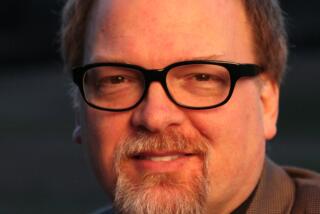Why Do Criminals Do It? : SEDUCTIONS OF CRIME : Moral and Sensual Attractions in Doing Evil <i> by Jack Katz (Basic Books: $19.95; 384 pp.; 0-465-07615-7) </i>
John Allen, a career stickup man from a black ghetto in Washington had this to say about why he chose stickup over safer, more lucrative forms of crime:
“For a man, pimping is a good way of making money, but the fastest way is narcotics, and the safest and best way of all is numbers. Even though my whores were making a lot of money, I just didn’t like pimping that much. It ain’t my style. . . . I missed stickup quite a bit. . . . What I really missed was the excitement of sticking up and the planning and the getting away with it. . . .”
In “Seductions of Crime,” UCLA sociologist Jack Katz challenges the conventional view that criminals approach their crimes “in the calculating spirit of making money.” Cost-benefit analysis certainly does not seem to have been the driving force for Allen. By the time he was 34, he had spent more than 14 years behind bars and was crippled for life from a police shooting. Yet he persisted, committing at least one robbery even after confinement to his wheelchair.
Allen’s experience is by no means unusual. Burglaries and robberies yield an average take of only about $80. A relatively small number of repeat offenders account for most of these crimes and almost all of them spend much of their lives in jail. Where these career offenders are concerned, there is considerable support for the maxim that crime doesn’t pay.
The spending patterns of criminals lend additional testimony that material deprivation is not their primary motive. After a big score, a buying spree usually follows, only not the sort of buying we usually associate with poverty: “I get lots of things I don’t need. . . . When I’ve got money, I don’t sleep for three or four days--you’re just buying something all the time.” Often, much of the take is spent on others or simply given away. “The money ain’t nothing. You just use the money to make your play. To show people you are the best.”
Katz’s claim is that criminals seek not material rewards but the sensual experience of the crime itself. The adolescent shoplifter, for example, savors not the trinket she steals but the challenge of sneaking it past the clerk, the thrill of having outsmarted the system. With stickup men, as with members of adolescent street gangs, it is the transcendent joy of dominating an adversary. With the impassioned killer, it is to vent the rage triggered by humiliation or by a threat to some cherished moral value.
Katz argues for his claim by a patient and careful review of previously published ethnographic accounts of deviance. His method is to reconstruct the criminal’s experience in the moments leading up to the crime, and in this he is remarkably successful. He takes us inside the criminal’s head, where many readers will feel alarmed to discover that seemingly senseless crimes sometimes do indeed exert a strong sensual attraction.
Now, to say that crime is motivated by sensual attraction is not to say that it never makes sense from a materialist perspective, and Katz acknowledges that deviance often does serve practical purposes. He points out, for example, that the celebrity status of the “badass” assures a reliable source of sexual favors. There is also the irony that the ability to intimidate, which commands a variety of obvious material advantages, is most easily achieved by someone believed to be irrational. (Harvard’s Tom Schelling once observed that if a person knocked at your door and threatened to pull the pin on a hand grenade unless you gave him $10, you’d be much more likely to comply if his eyes were bloodshot.)
In stressing that emotional factors explain criminal behavior, Katz does not deny the patterns in the traditional background factors emphasized by social scientists. He notes, for instance, that robberies are overwhelmingly more likely to be committed by black males, and explains how factors in the ghetto experience predispose these men to be seduced by the opportunity to dominate in a stickup. In the same vein, he explains why the experience of impoverished immigrant youths in America makes them ripe candidates for the seductions of membership in elite street gangs.
What remains unclear is why Katz believes that these background factors are not really causes of crime:
”. . . The longstanding association in the United States of street elites with urban ethnic-minority adolescent poverty groups is causally spurious. None of these conditions, alone or in combination, is necessary for the social construction of the phenomenon. What is essential is the existence, in the generational background, of a culture humbled at the prospect of entering modern, rationalized society.”
What does Katz mean here? Surely membership in a humbled culture is neither more nor less necessary (or sufficient) to explain crime than is membership in an urban, ethnic-minority poverty group. Indeed, the two categories are very much the same. The conventional view is that membership in these categories makes people more likely to engage in deviant behavior. The conventional view goes on to assume that this deviance is undertaken for the primary purpose of acquiring additional material possessions. Katz gives us ample basis for questioning the latter assumption. But his analysis provides no grounds whatever for concluding that the traditional background factors do not cause people to commit crimes.
For policy reasons, this point is important. After all, as potential victims of violent crime, our most pressing concern is what can be done to prevent it. The conventional wisdom is that programs that reduce social and economic inequality serve this purpose. Katz seems to disavow this view, saying that readers “who follow (his) argument to its end may not find encouragement for broad-based social welfare policies. . . .” Yet it simply does not follow from his analysis that crime rates will be unaffected by reductions in inequality. And from the victim’s point of view, it does not matter whether social programs curtail crime by making it less seductive or by reducing the need for material goods.
But this is a quibble. “Seductions of Crime” is an important and original book. It is not an easy read, but serious students of crime cannot afford to ignore it.
More to Read
Sign up for our Book Club newsletter
Get the latest news, events and more from the Los Angeles Times Book Club, and help us get L.A. reading and talking.
You may occasionally receive promotional content from the Los Angeles Times.






